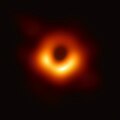- Comparison of explosion scenarios of supernovae (SN), gamma-ray bursts (GRB) and fast blue optical transients (FBOT)
- Bolometric luminosity of AT2018cow, compared against other fast transients, showing a very rapid evolution and high peak luminosity [7]
- X-ray luminosity of FBOTs compared with other astronomical transients [10]
- Star formation rate diagram for FBOTs. [14]

In astronomy, a fast blue optical transient (FBOT), or more specifically, luminous fast blue optical transient (LFBOT), is an explosive transient event similar to supernovae and gamma-ray bursts with high optical luminosity, rapid evolution, and predominantly blue emission. [1] The origins of such explosions are currently unclear, with events occurring at not more than 0.1% of the typical core-collapse supernova rate. [2] This class of transients initially emerged from large sky surveys at cosmological distances, [3] [4] yet in recent years a small number have been discovered in the local Universe, most notably AT 2018cow.
Contents
The precise definition of what constitutes a 'fast blue optical transient' is currently contentious in the literature, largely defined by the observational properties rather than the underlying mechanisms/objects. Even within the class, growing samples of candidates [5] are beginning to reveal significant variation in properties when the objects are studied in greater detail, potentially indicative of different progenitor channels or explosion mechanisms.






